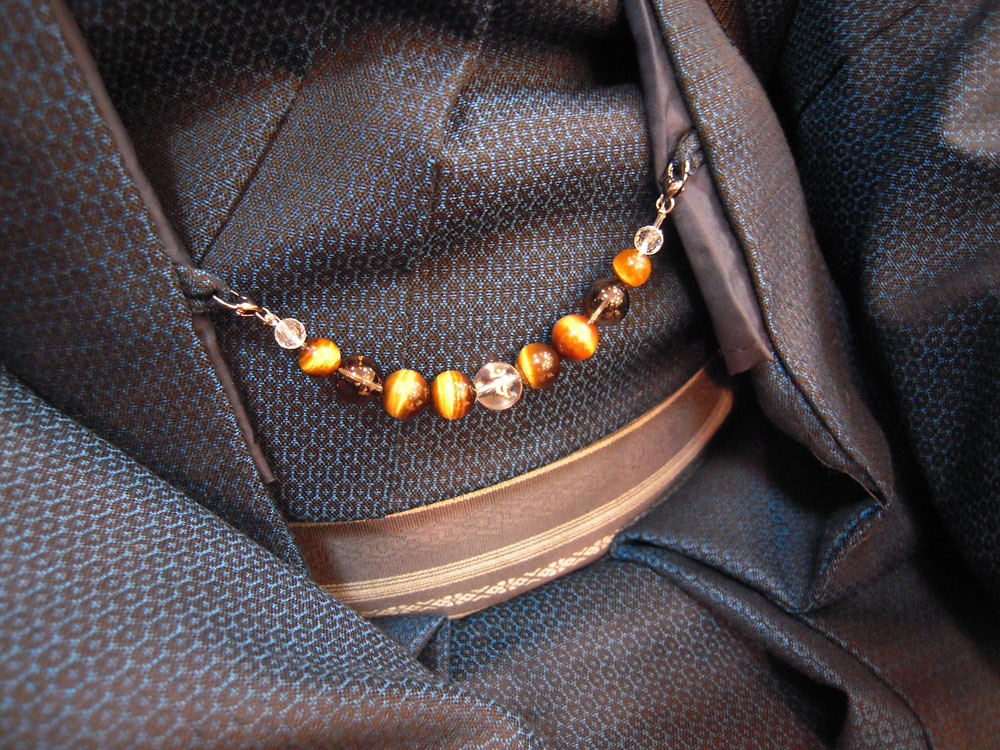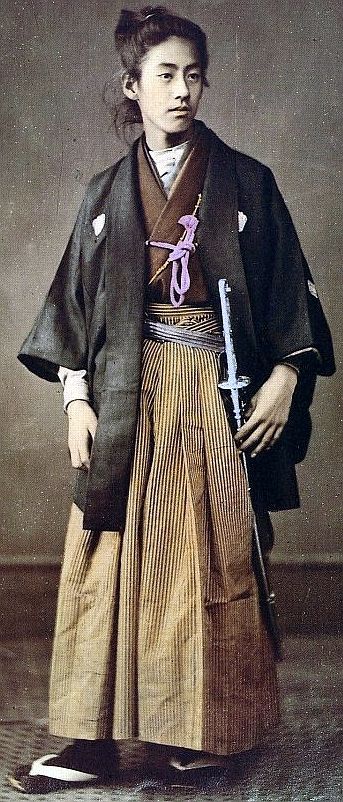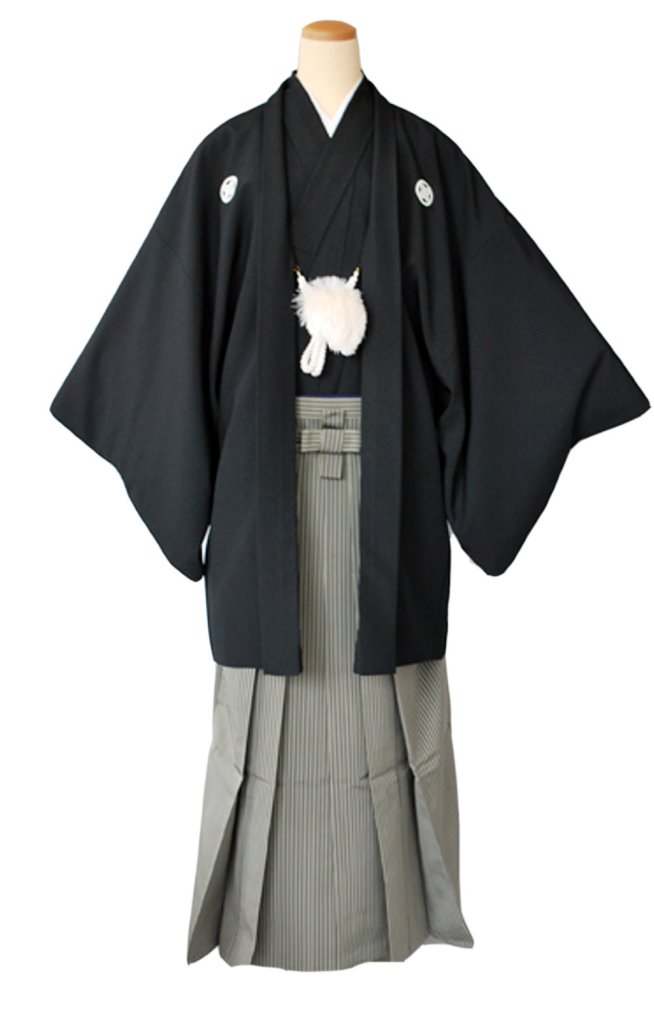

Overview
The Haori is an elongated jacket, similar in shape to the Kimono that is usually worn by men for formal occasions. Originally worn by the Samurai warrior class, the Haori was gradually integrated into the fashion of many other classes over time.
Appearance
Traditionally the Haori was made of woven silk. With various techniques, this allowed for the creation of intricate patterns to be displayed on both the outside and the inside of the garment. While the Haori was initially worn by men only, gradually it became an intersex item, however, there are differentiations between the structure of men’s and women’s Haori. On men’s Haori, oftentimes the sleeves of the garment are attached entirely to the body of it, whereas on women’s Haori the sleeves are not. This is due to the fact that men’s kimono are created in the same style, while women’s kimono and Haori must have free sleeves to account for the Obi. Women’s Obi tend to be larger and more intricate, compared to men’s Obi. The men’s Obi are also worn lower on the body so the sleeves tend to not get in the way. Another gendered difference between men’s and women’s Haori are in the colors of the garment. Men’s Haori typically have subtle subdued colors and patterns. Lastly, the Haori for men and women have different ways of being tied. While the Haori is seen worn open, it can also be fastened using ties known as Himo. Men’s Himo are usually hooked and unhooked rather than tied, while women’s Himo are looped and tied to cinch the garment.


History
The Haori can be traced back to the Sengoku period (1467c.e.-1615c.e.) During this time Samurai wore a sleeved version of the Haori known as Jinbaori over their amour. While this type of Haori served as protection from the elements, the design of it could also relay the status of the wearer. Sodenashibaori was another type of sleeveless Haori worn by Samurai that was typically worn with the color facing outwards. Moving into the Edo period (1603c.e.-1868c.e.) Haori became a popular luxury item with the middle class. Due to the popularization of the garment among the lower classes, the upper-class enacted laws preventing the lower class from wearing ornate Haori, reserving that right for only Samurai and the wealthy. The stifling of extravagance brought about the practice of creating these extravagant designs in the lining of the Haori, hiding them from plain view. This allowed lower classes to continue wearing nicer Haori that appeared to be plain and unordinary. During this period women started to wear Haori as well. This was first practiced by Geisha; “During the seventeenth century geisha in the Fukagawa neighborhood of Edo, as Tokyo was then called, started to wear haori to assert their mastery and skill in the arts “like men.” At first a radical fashion statement, within a century it was common to see women wear either haori under their kimono or hakama (full-cut trousers or a divided skirt) over their kimono, but not both.” (Encyclopedia, 2020)
Cultural Association
The Haori today is considered formal wear, and is often worn by men. One of the distinct features of formal Haori is the display of Mon (family crest) on the garment. The act of displaying one’s family crest on Haori began during the 19th century. During this time, married women would wear Haori with the Mon of her family over their kimono. The number of crests that are displayed on a garment typically range between one through five. The types of events in which these Haori are worn include weddings (of the individual), funerals, and occasionally graduation.

How to Wear Haori
Citation
Encyclopedia, (30 April 2020), “Haori .” Fashion, Costume, and Culture: Clothing, Headwear, Body Decorations, and Footwear through the Ages . . Retrieved from https://www.encyclopedia.com/fashion/encyclopedias-almanacs-transcripts-and-maps/haori
References
- https://wafuku.wordpress.com/2012/02/16/2974/
- https://matcha-jp.com/en/2648
- https://www.encyclopedia.com/fashion/encyclopedias-almanacs-transcripts-and-maps/haori
- https://www.kent.edu/museum/inner-secrets-japanese-mens-haori
- https://quod.lib.umich.edu/b/bulletinfront/0054307.0016.111/–recent-museum-of-art-acquisition-colorful-japanese-haori?g=bulletin;rgn=main;view=fulltext;xc=1
- http://www.samue.co.jp/ovs/haori/haori01.html
- https://mymodernmet.com/trove-modern-samurai-haori-jackets/